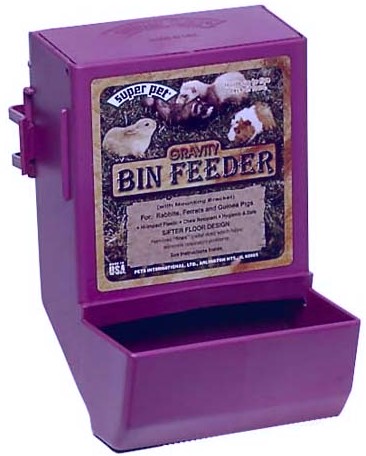Marietta wrote:
Leaf wrote:
My only caution with the ceramic bowls is that they can contain lead paint.
WHAT???? I've never heard that ceramic bowl paint can contain lead!!!!!! Lead is carcinogenic! And how can one tell? Is there any sign that has to do with how the paint looks? Do particles of paint get licked by the bun when he/she eats?
Marietta
Properly glazed commercial products are generally safe for pets.
Homemade or foreign pottery may not be properly glazed and may leak metals from the glaze or the paint.
More info:
High Lead in Ceramicware
http://www.allergybuyersclub.com/learning/articles/tfh/leadlingers.html
Some ceramicware has lead in the glaze and may introduce small amounts of lead in the diet, which the body can tolerate, says Carrington. "The major problem with ceramicware is the rare poorly made piece with very high levels of leaching lead."
Bolger adds that even with these pieces, risk varies. "A plate coming in brief contact with food is not an issue," he says, "but storage of food in such a bowl or pitcher is a risk." It's especially wise to avoid storing acidic foods like juice and vinegar in ceramic ware , as acids promote lead leaching.
FDA has established maximum levels for leachable lead in ceramic ware , and pieces that exceed these levels are subject to recall or other agency enforcement action. The levels are based on how frequently a piece of ceramic ware is used, the type and temperature of the food it holds, and how long the food stays in contact with the piece. For example, cups, mugs and pitchers have the most stringent action level, 0.5 parts per million, because they can be expected to hold food longer, allowing more time for lead to leach. Also, a pitcher may be used to hold fruit juice. And a coffee mug is generally used every day to hold a hot acidic beverage, often several times a day.
Michael Kashtock, Ph.D., chief of FDA's Office of Plant and Dairy Foods and Beverages enforcement branch, says, "FDA allows use of lead glazes because they're the most durable. But we regulate them tightly to ensure their safety. Commercial manufacturers ... employ extremely strict and effective manufacturing controls that keep the lead from leaching during use." Small potters often can't control the firing of lead glazes as well, he warns, so their ceramics are more likely to leach illegal lead levels, although many do use lead-free glazes. "The best advice is to stick to commercially made products. If you are going to buy something hand-made or hand-painted, get assurance that lead-free glazes were used," he says.
Antique ceramicware may leach high levels of lead. Consumers can use a lead test kit from a hardware store on such pieces and on other hand-painted ceramicware they may already own. Avoid using such items--particularly cups, mugs or pitchers--if the glaze develops a chalky gray residue after washing.
"And you want to make sure," says Rosenthal, "that you know whether an item is for food use, or if it's for decorative use only." FDA requires high-lead-leaching decorative ceramicware to be permanently labeled that it's not for food use and may poison food. Such items bought outside the United States may not be so labeled, potentially posing serious risk if used for food.



